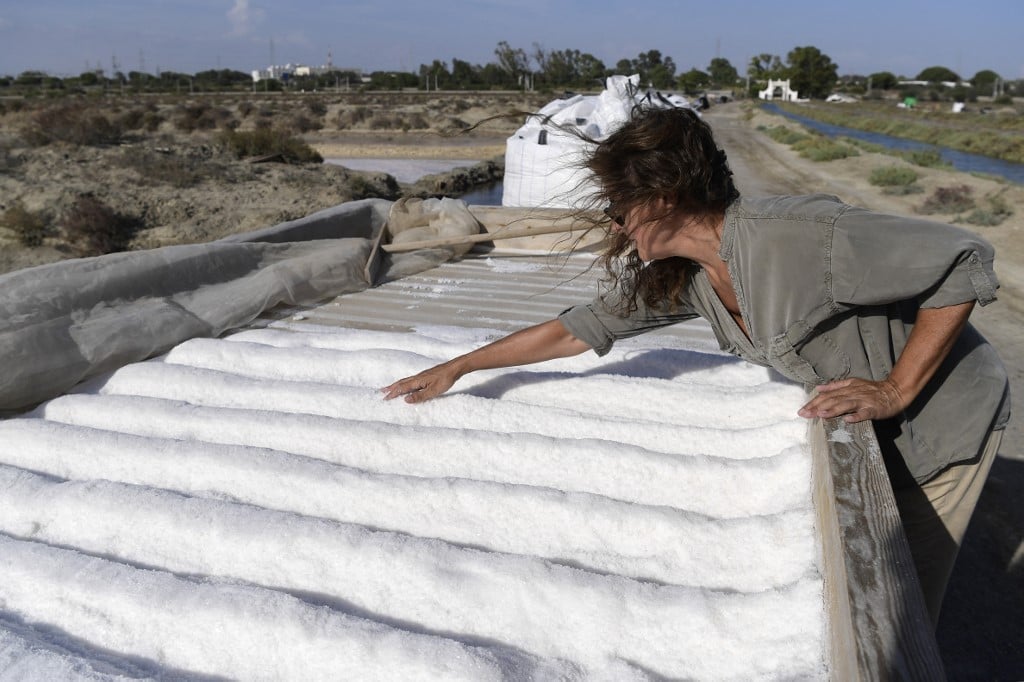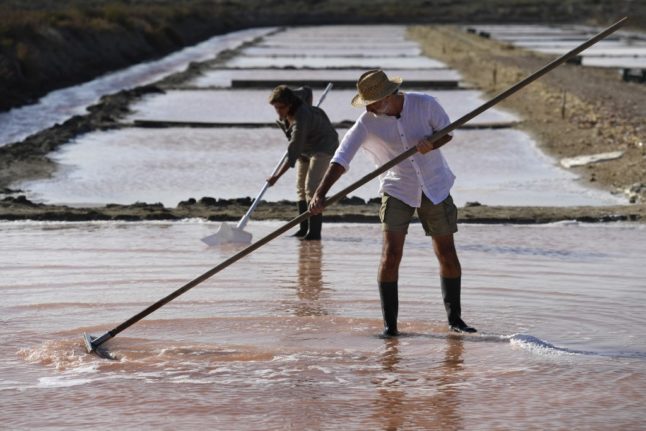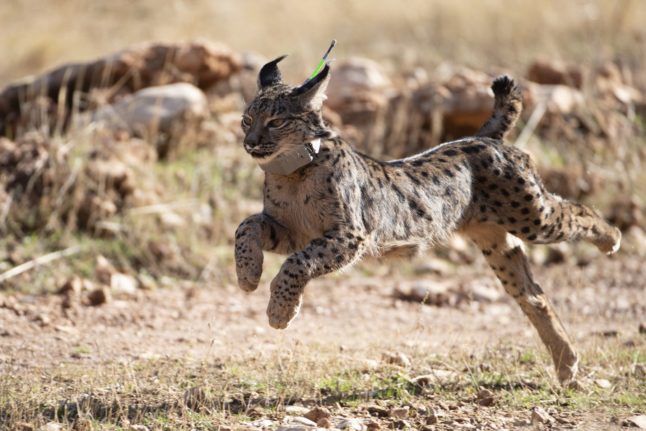Civilisations as old as the Phoenicians who ruled the Mediterranean from around 1,200 BC have taken advantage of the constant and strong winds that blow from North Africa, facilitating the evaporation of seawater to produce salt in the region.
“This is the perfect place for salt marshes. It’s windy, there is lots of sunshine… you have everything you need,” said De Lamadrid, wearing a straw hat to protect himself from the blazing sun.
The 56-year-old, originally from Seville, was part of a small but dynamic group of artisans trying to keep the tradition of sea salt harvesting alive.
The sector flourished in this sunny region for centuries, with salt from Cádiz exported to the Americas, until the invention of refrigeration drastically reduced the need for salt to conserve foods.
Of the 160 sea salt producers that existed at the beginning of the 20th century, only four are still operating.
After a long career as a photographer and drawn by the beauty of the salt marsh landscapes, De Lamadrid set up shop in the region in 2020, becoming a sea salt harvester alongside his wife and two employees.
“We had to learn everything, we were starting from zero,” he explained, saying he learnt the techniques from one of the few veteran harvesters who are still active.
He also spent time in Portugal and France “to discover other techniques”.
Last year they produced 30 tonnes of virgin sea salt and three tonnes of fleur de sel — or “flower of salt” — large salt crystals used to garnish and season everything from fish, meat and vegetables to desserts and baked goods.

‘Harvest everything by hand’
To harvest the salt, sea water from the Atlantic is flushed into a network of reservoirs built in the salt marshes, then allowed to evaporate.
When the salt in the water reaches the right concentration, it forms white crystals which workers then rake into small white heaps.
“We harvest everything by hand in the traditional way,” said De Lamadrid.
When salt demand fell with the advent of refrigeration, Cádiz “didn’t know how to adapt” unlike places like Guerande in northwestern France which started selling fleur de sal and other products, said Juan Martín, head of Salarte which works to revive the sea salt industry.
Since it was founded in 2012, Salarte has refurbished 250 hectares of salt flats using private financing.
“Some salt marshes were in a really poor state,” said Martin, a marine biologist who believes places like the Bay of Cádiz are not valued enough for their ecological importance.
“It’s a shame because the marshes are real treasures” not only as a “source of economic activity” but also for their “extraordinary biodiversity,” he said, using binoculars to watch migrating birds feeding at a recently-restored salt flat.

‘Nothing like industrial salt’
The revival of the salt industry is one of a string of initiatives over the past decade, from ecotourism to the cultivation of oysters, samphire and locally-produced cosmetics, to breathe new life into the salt marshes which are part of a 10,500-hectare natural park.
The marshes — home to sea beam, shrimp, and clams — are “an extraordinary pantry,” said chef Angel León whose restaurant Aponiente, which is located in a 19th-century tide mill and holds three Michelin stars, serves up dishes based on such ingredients — and uses the local sea salt.
“Salt is something we use every day but which we don’t fully appreciate,” said the 46-year-old.
Artisanal sea salt has a texture and taste which is “nothing like” industrial salt, he said.
“The problem is that we don’t pay it enough attention,” he mused, saying he hoped Cádiz sea salt will soon find its way into top restaurants around the world.



 Please whitelist us to continue reading.
Please whitelist us to continue reading.
Member comments